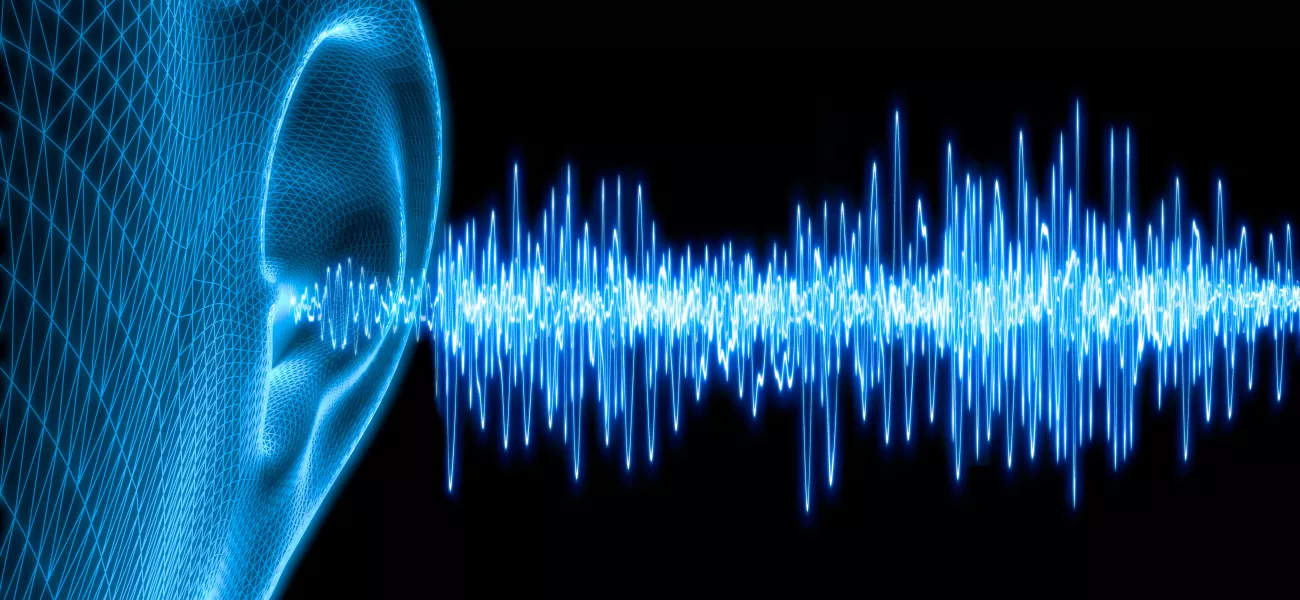
Voice services and audio communication are increasingly used together with cameras and analytics in network surveillance systems. And for a good reason. The human mind reacts to sounds the same way today that it always has. It either makes us feel safe, or prepares us for fight or flight. Using the right sound at the right time can produce useful reactions – which makes audio such a powerful tool for improving safety and security.
Throughout human history, we have used various sounds to signal danger. Dogs have protected farms, barking to warn the household if an intruder is trespassing. Bells, drums and trumpets have been used to sound alarms in castles and forts, warning of hostile attacks.
Historically, the human voice has also been used – and still is – to send information that needs extra attention. Similarly, different sounds can be used to put people in the right mood in certain surroundings, such as in shopping malls, schools, prisons or commuter trains. With modern audio technology, people can be made to feel safe, for example when standing in line at an ATM, by letting them know that someone is watching. This can be done either by sending a live or a pre-recorded message through a loudspeaker.
As human beings, we can’t shut our ears, which means that the right sound to the right person at the right time can be a very powerful communication tool.
Today, modern neuroscience has concluded that human ears, emotions and behavior have a much stronger bond than first believed. And different sounds affect us in different ways. Music, for instance, affects no less than six of our psychological mechanisms according to a research from Lund University, Sweden. For example, music with sudden loud sounds and fast musical patterns results in brainstem reflexes that tell us that something is potentially important and urgent.
And even though we live today in a digitized, high-technology world, from a biological perspective, modern human beings respond to their surroundings pretty much the same way that we have throughout human history. One person who knows all about this is Margareta Andersson, Sound Architect at Lexter Sound Design in Stockholm, Sweden. Below she shares her insights and thoughts on how audio can be used as a powerful tool to improve safety and security.
Why does sound have such a great impact on humans?
“When we lived outdoors, with the forest as our walls and the sky as our roof, we had to trust our senses to survive. Our eyes, taste buds and ears told us what was safe or not – these so-called genetic memories still linger in our human DNA,” says Andersson.
“For example, everyone reacts the same way when we hear a baby cry. We instantly know that the baby needs to be cared for. This is a reaction to something that we as humans just know, without having to learn it. Similarly, we all know that the loud sound of thunder or a growling animal generally implies danger. And our brain quickly sends signals to our body to either stay and fight or to run away. On the other hand, a bird singing or the sound of water – like soft rain or a running stream – make us feel relaxed”.
Why is audio communication sometimes more effective than visual communication?
“Hearing is something of a human navigation tool. When we can’t navigate our surroundings using our eyes – for example if it is dark or when we are sleeping – our ears tell us what is happening, and the brain signals how we should react to that information,” says Andersson.
“To give an example: where I live, there is a car park where a pre-recorded voice tells drivers, before they even enter the car park, that the building is equipped with camera surveillance. There is probably a sign providing the same information, but honestly, I’ve never read it. On the other hand, the voice message warning me always keeps my senses alert,” she says and adds: “As human beings, we can’t shut our ears, which means that the right sound to the right person at the right time can be a very powerful communication tool.”
With modern audio technology, people can be made to feel safe, for example, when standing in line at an ATM, by letting them know that someone is watching. What are your thoughts about using sounds in surveillance situations?

“Voice messages are effective when you want to inform or give instructions, while loud noises create physical discomfort and signal a sense of emergency, also for people in the surroundings,” Andersson says. “Voice messages addressing specific individuals and situations, for example a speaker voice saying, ‘You there in the red T-shirt, take a step back’, will often have a daunting effect due to the direct nature of the message.”
Andersson says that humans react differently to these live or pre-recorded voice messages depending on the situation and on what type of voice is conveying the message. “From a purely technical point of view, a female voice tends to get perceived as easier to understand due to its higher vocal register, which has fewer low bass tones than a male voice and which can be difficult to emit for smaller loudspeakers.”
She continues: “Additionally, the cultural context affects how we respond to a message. In some cultures, women more often have typical service occupations – such as train and flight attendants. This is most likely why audio messages at, for example, train stations and airports use female voices. However, in other cultures you may only hear male voices in public places.”
Does audio communication, together with visual communication, give a fuller picture?
“Yes, humans often need our vision to get the whole picture. Let’s say you enter a hotel room in the middle of the night and it’s pitch-black inside. When you can’t see properly, your brain struggles to make out the sources of different sound. So, that sound coming from outside the hotel room; is it a highway or is it waves crashing on a beach? This is why a combination of audio and visual communication generally is the best solution if you want to get people’s full attention,” Andersson says.
To summarize: network surveillance systems that combine both sound and vision are a powerful tool for improving safety and security. Using two senses is, quite simply, more effective than using just one. It is even more critical if you want people to react quickly, or to not miss out on important messages. So it is no surprise that systems that combine cameras and audio are seen as the future for businesses that need high-technology surveillance systems.
Five reasons why audio gets people’s attention:
- Humans can’t shut their ears – thus, your message will always be listened to.
- It’s in the human DNA to react quickly to sounds implying danger.
- Sounds can also be used to make people feel safe and relaxed.
- The human voice can be used differently to get your message across, and human voice is more effective than signals in getting attention.
Audio, together with visuals gives a fuller picture. Communicating with more than one sense is more effective than communicating with only one.
